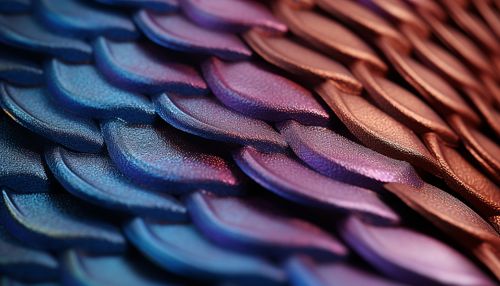The Science of Smart Materials and Their Applications
Introduction
Smart materials, also known as intelligent or responsive materials, are designed materials that have one or more properties that can be significantly changed in a controlled fashion by external stimuli, such as stress, temperature, moisture, pH, electric or magnetic fields. The concept of smart materials has been expanded to include materials that receive, transmit, or process information. They are a class of materials that can respond to changes in their environment in a useful and often repeatable way.


History and Development
The development of smart materials has roots in many different scientific fields, from chemistry to materials science, physics, and engineering. The first smart materials, such as piezoelectric materials and shape memory alloys, were discovered in the mid-20th century. Since then, the field has expanded to include a wide variety of materials, each with their unique properties and applications.
Types of Smart Materials
There are many types of smart materials, each with its unique properties and potential applications. Some of the most common types include:
Piezoelectric Materials
Piezoelectric materials generate an electric charge in response to applied mechanical stress. This property makes them useful in a wide range of applications, from sensors and actuators to energy harvesting devices.
Shape Memory Alloys
Shape memory alloys (SMAs) are metals that "remember" their original shape and can return to it when heated. This property has been used in a variety of applications, from medical devices to aerospace engineering.
Electrostrictive Materials
Electrostrictive materials change their shape or size in response to an electric field, making them useful in applications such as actuators and sensors.
Magnetostrictive Materials
Magnetostrictive materials change their shape or size in response to a magnetic field. They are used in a variety of applications, including sensors, actuators, and energy harvesting devices.
Photomechanical Materials
Photomechanical materials change their shape or size in response to light. They have potential applications in a variety of fields, including robotics, medicine, and energy harvesting.
Applications of Smart Materials
Smart materials have a wide range of applications, from everyday items to advanced technology. Some of the most common applications include:
Sensors and Actuators
Smart materials are often used in sensors and actuators, devices that convert one form of energy into another. For example, piezoelectric materials can convert mechanical stress into an electric charge, making them useful in sensors that detect pressure, force, or vibration.
Energy Harvesting
Smart materials can also be used to harvest energy from their environment. For example, piezoelectric materials can convert mechanical stress into electrical energy, making them useful in energy harvesting devices that capture energy from vibrations or impacts.
Medical Devices
Smart materials are increasingly being used in medical devices. For example, shape memory alloys can be used in stents, devices that are inserted into blood vessels to prevent them from closing. The SMA stent can be compressed for insertion into the body, then heated to return to its original shape once in place.
Aerospace Engineering
Smart materials are also used in aerospace engineering. For example, shape memory alloys can be used in actuators that control the movement of aircraft wings or satellite antennae.
Future of Smart Materials
The field of smart materials is continually evolving, with new materials and applications being developed all the time. As our understanding of these materials and their properties grows, so too does the potential for their use in a wide range of applications. From energy harvesting and environmental monitoring to healthcare and aerospace, the possibilities for smart materials are vast and exciting.
